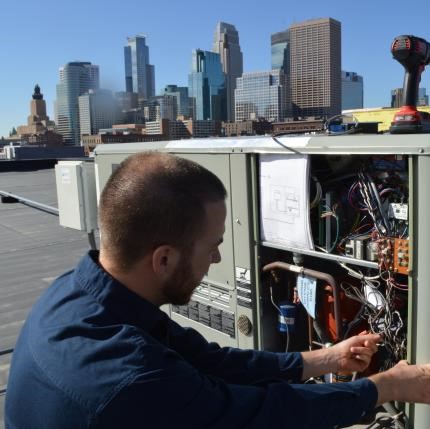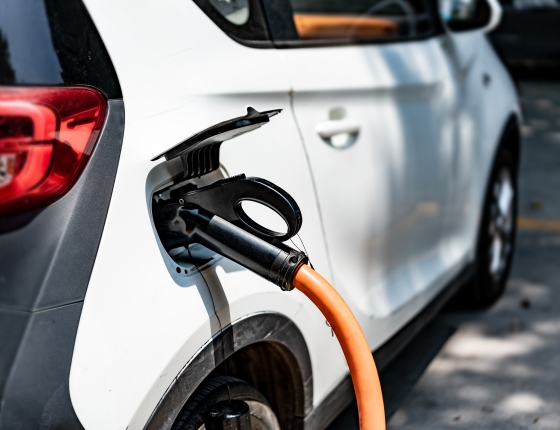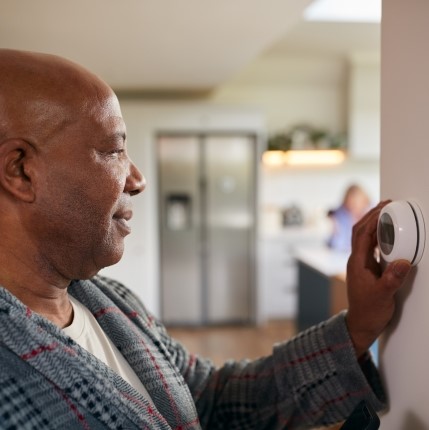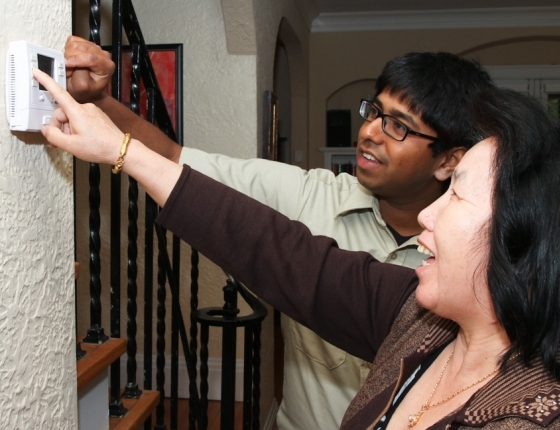This post complements our quarterly research newsletter, which features updates on CEE's research projects. Sign up to get this information in your inbox.
Overcoming the Market Barriers for RTU Retrofit Enhancements
 Background: Retrofit packages and technologies are viable options for existing standard efficiency rooftop units (RTUs), as RTUs serve many different building categories and space types in Minnesota. However, retrofits continue to be uncommon. This project sought to define the barriers that have kept these products from significant market penetration and develop strategies to overcome those barriers based on the features and cost-effectiveness of specific enhancements.
Background: Retrofit packages and technologies are viable options for existing standard efficiency rooftop units (RTUs), as RTUs serve many different building categories and space types in Minnesota. However, retrofits continue to be uncommon. This project sought to define the barriers that have kept these products from significant market penetration and develop strategies to overcome those barriers based on the features and cost-effectiveness of specific enhancements.
Update: In June, the project team hosted a webinar on key findings. They found that RTUs are typically only replaced when they fail, forcing contractors and building decision makers to act quickly to replace. Without adequate information and straightforward rebate incentives, decision makers often choose standard efficiency equipment on unit failure, missing out on retrofit opportunities on existing RTUs. The team determined that contractor and customer engagement and education, prescriptive rebates, and continuing to modify TRM measures can strategically address and overcome the market barriers to RTU retrofits.
This project is supported by a grant from the Minnesota Department of Commerce, Division of Energy Resources through the Conservation Applied Research and Development (CARD) program, which is funded by Minnesota ratepayers.
How Smart Do Intelligent Buildings Need to Be?
Background:  Intelligent Buildings have enhanced operation, monitoring, and control, and promise greater energy efficiency, business productivity, and building security and safety. However, increased complexity and energy overhead are overlooked consequences of connected devices and systems. Instead of an "all of the above" approach to smart technology, this project will provide guidance for successful implementations that account for building type, space use, occupants, and operations and maintenance. This project's analysis, modeling, and surveys will inform and support utility programs from networked lighting controls to grid-interactive buildings.
Intelligent Buildings have enhanced operation, monitoring, and control, and promise greater energy efficiency, business productivity, and building security and safety. However, increased complexity and energy overhead are overlooked consequences of connected devices and systems. Instead of an "all of the above" approach to smart technology, this project will provide guidance for successful implementations that account for building type, space use, occupants, and operations and maintenance. This project's analysis, modeling, and surveys will inform and support utility programs from networked lighting controls to grid-interactive buildings.
Update: On Thursday, July 20, the project team will host a webinar on the project's findings. The project investigated how the intelligent technologies need to be optimized with respect to specific needs, uses, operation, and maintenance. Through analysis and modeling, the energy costs of building intelligence were weighed against the benefits provided. Lab testing was also performed to investigate potential opportunities for office plug load control, and a market analysis examined the factors that may be necessary to promote wider adoption of intelligent building technologies.
This project is supported by a grant from the Minnesota Department of Commerce, Division of Energy Resources through the Conservation Applied Research and Development (CARD) program, which is funded by Minnesota ratepayers.
Upper Midwest Inter-tribal EV Charging Community Network
 Background: This project will extend access to and use of electric vehicle (EV) infrastructure in Tribal communities in the Upper Midwest by deploying and assessing charging infrastructure and fleet EVs and conducting outreach. The project team will also create a template based off their findings so that other communities can replicate this work. CEE will lead analysis of EV use and charging infrastructure metrics to quantify emissions reductions and the total cost of operation.
Background: This project will extend access to and use of electric vehicle (EV) infrastructure in Tribal communities in the Upper Midwest by deploying and assessing charging infrastructure and fleet EVs and conducting outreach. The project team will also create a template based off their findings so that other communities can replicate this work. CEE will lead analysis of EV use and charging infrastructure metrics to quantify emissions reductions and the total cost of operation.
Update: This summer, six Level 2 chargers will be installed for the project: three in Red Lake Nation and three in Standing Rock Nation. The team will implement chargers in Red Lake, Redby, Ponemah, McLaughlin, Fort Yates, and Mobridge. The team selected sites for the chargers based on their accessibility to as much of the public as possible, such as businesses like grocery stores, gas stations, casinos, and schools. Management of the chargers will be handed over to local community organizations, so that funds accrued from service will be invested back in the communities. After the new chargers are verified operational, the team will update common EV charger databases.
Visit Electric Nation Project page
This project is funded by the Department of Energy, under Award No. DE-EE0009865.
Electric Heat Identification Tool
 Background: For this project, CEE will create a spreadsheet tool that can be used to identify utility customers that use electricity for space heating, based on CEE's billing analysis methodology. Users of the tool input electricity usage data for a set of customers, then the tool returns the list of customers ranked by a statistical metric quantifying the degree to which electricity use correlates with heating load.
Background: For this project, CEE will create a spreadsheet tool that can be used to identify utility customers that use electricity for space heating, based on CEE's billing analysis methodology. Users of the tool input electricity usage data for a set of customers, then the tool returns the list of customers ranked by a statistical metric quantifying the degree to which electricity use correlates with heating load.
Update: The project team has completed creation of the tool and presented the analysis methodology and data validation process to the client. The tool was created in Excel to offer a lower barrier of entry for most users. The tool compares electricity use on a typical winter day to electricity use on the coldest winter day and also allows users to look up and import relevant weather data from a NOAA API in the spreadsheet by zip code. The tool can be used for tailored marketing by conservation programs to target customers who would be ideal for more efficient equipment retrofits, such as heat pumps and smart thermostats.
Funding for this project and the identification tool is provided by the American Public Power Association's DEED Program, and was created in partnership with WPPI Energy.
